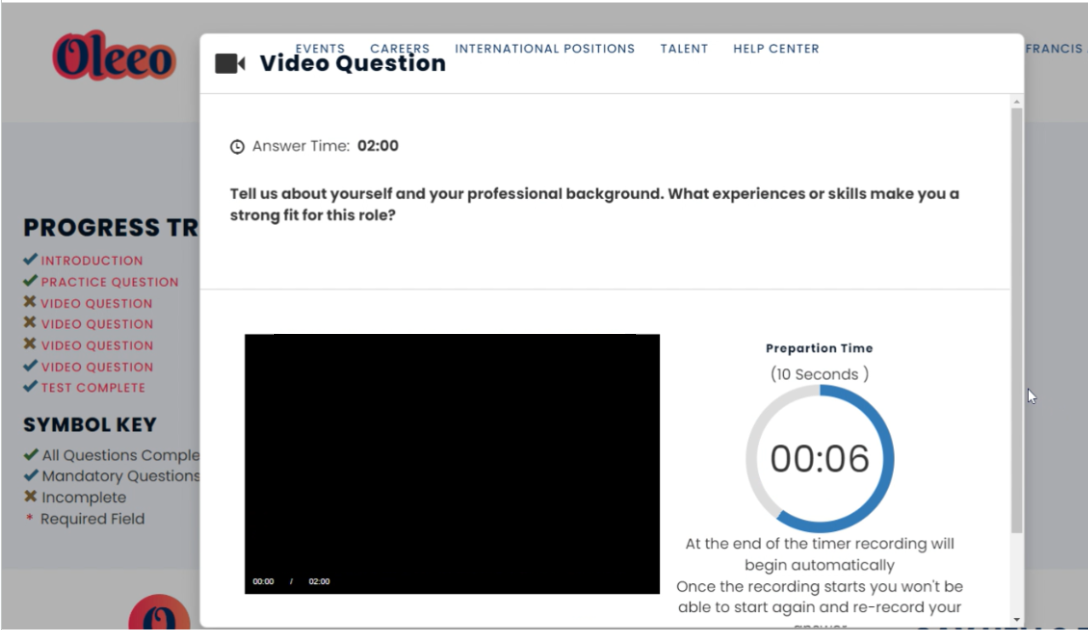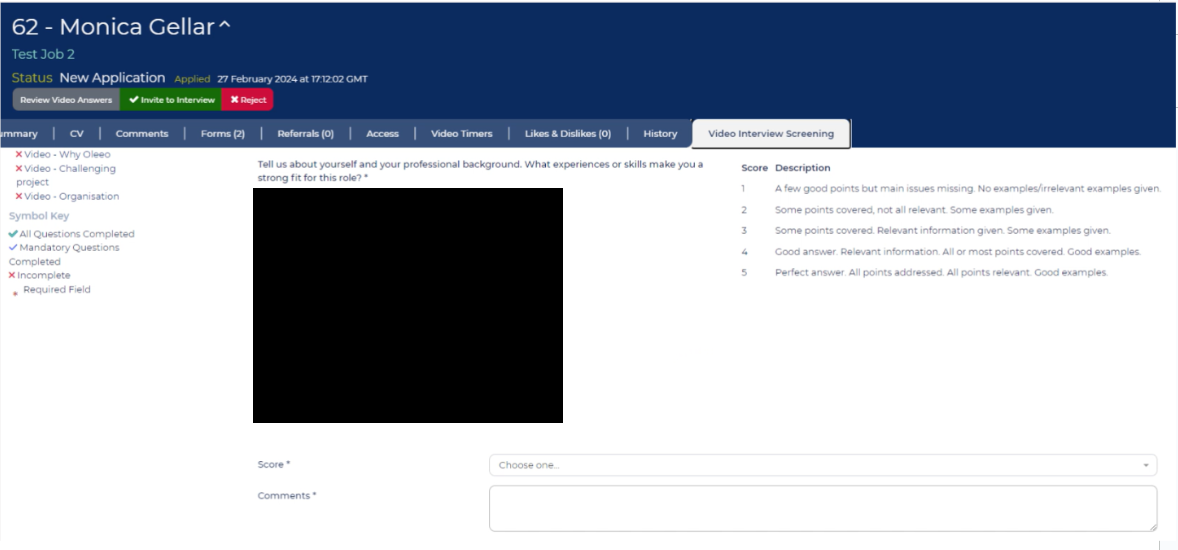WHAT IS ON-DEMAND AUDIO SCREENING?
In today's fast-paced talent acquisition landscape, asynchronous (on demand) video interviews have become a valuable tool for initial candidate screening. However, the subtle shift to audio-only asynchronous interviews offers significant advantages over standard asynchronous video interviews, leading to a more efficient, equitable, and focused evaluation process.
On Demand Audio Screening (ODAS) utilises the infrastructure of our On Demand Video Screening (ODVS) tool, such as recording and re-recording answers to interview questions, but with both the interviewer and the candidate keeping their cameras turned off, focusing solely on the auditory exchange.
WHAT DOES IT DO?
-
Screening interviews are a crucial stage for many recruiters, yet they can be time-consuming to coordinate - even when conducted via phone or live video calls. ODAS removes the interview scheduling bottleneck, ultimately reducing the overall time to hire.
-
The flexibility of ODAS allows candidates to complete screening interviews at their convenience. This approach eliminates scheduling challenges, which can be particularly difficult for individuals balancing education, work, or childcare commitments.
-
Rather than being limited to traditional one-on-one screening, ODAS allows multiple screeners to assess candidates. This means the entire team can view, evaluate, and score candidate responses, ensuring a fully collaborative assessment process.
- By removing the visual element, ODAS offer a more strategic and effective approach to initial screening.
- You can record video but choose which users can view both video and audio, for validation purposes (screeners would only see audio).
KEY FEATURES & BENEFITS?
- Mitigated Bias for Fairer Evaluations: Focusing solely on audio removes visual distractions, allowing evaluators to concentrate on the candidate's qualifications, communication skills, and the substance of their answers, leading to more objective decisions.
- Enhanced Accessibility for a Wider Talent Pool: Audio-only interviews lower the technological barrier to entry, making the process more accessible for candidates with varying internet speeds, devices, and comfort levels with being on camera. This promotes inclusivity and broadens your talent pool.
- Sharpened Focus on Communication Skills: Without visual cues, the emphasis shifts entirely to the candidate's verbal clarity, articulation, tone, and ability to convey their thoughts effectively – crucial skills for many roles.
- Reduced Candidate Stress for Authentic Responses: Many candidates feel less pressure and anxiety when they don't have to worry about their appearance or background, allowing them to present a more natural and authentic version of themselves.
- Efficient and Scalable Review Process: Reviewing audio responses can be significantly faster than watching videos, allowing recruiters to efficiently screen a larger volume of candidates and identify top talent more quickly.
- Improved Consistency in Evaluation: Standardising the interview to audio ensures all candidates are evaluated on the same criteria, focusing on their verbal responses to the pre-recorded questions.
HOW DOES IT WORK?
Candidate Experience:
-
Receives invite to ODAS via email.
-
Logs into candidate portal.
-
Requests reasonable adjustments (if required).
-
Completes ODAS process and submits answers, all on the candidate portal.
-
The system can be configured either for no video to be recorded whether they have their camera on or not, or you can choose to record video and choose which user types have access to both audio and video (it can be useful for a super user to have access to video, where that user can check if you have concerns over cheating or authenticity - is it who you think it is / who arrived at a later face to face interview).

Recruiter Experience:
-
Review applications and shortlist.
-
Invite chosen candidates to ODAS via email.
-
Assess and grant reasonable adjustments (if requested).
-
View candidate responses in Oleeo, score in feedback form and progress or reject candidate.

USE CASES?
Audio-only asynchronous interviews are particularly beneficial for:
- Initial Screening in High-Volume Recruitment: Efficiently filter a large number of applicants based on essential communication skills.
- Roles Emphasising Verbal Communication: Accurately assess candidates for positions requiring strong phone communication, such as customer service and sales.
- Organisations Prioritising Diversity and Inclusion: Reduce unconscious bias and create a more equitable hiring process.
- Remote-First Companies: Offer flexibility and accessibility to candidates across different time zones and locations.
CONSIDERATIONS
-
In its current iteration, there is no option to set an overall time limit for all the questions combined. While each individual question is timed, an applicant could technically take an extended period, to complete all the questions.
-
Videos will be available for 6 months following the recording.
COSTS
There will be a one off implementation fee. License costs will be per interview and annual committed volume.
Please speak to your Commercial Manager for further information.
NEXT STEPS
Speak to your Customer Success or Commercial Manager for any additional information.
ADDITIONAL INFORMATION






